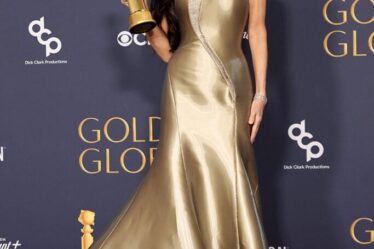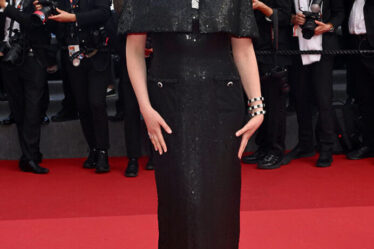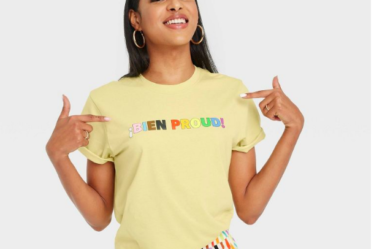
Universal Standard’s value proposition has not changed since the brand launched in 2015: high-quality fashion that fits every woman, from size 00 to 40.
The New York-based label has stuck to this mantra even as the number of brands championing body diversity has dwindled in recent years. But it’s never faced a challenge like Ozempic.
Usage of the weight loss drug, and others like it, is surging, leading some forecasters to question whether today’s size ranges might someday be rendered obsolete. AI-based forecasting company Impact Analytics found in a report published earlier this year that in New York’s affluent Upper East Side neighbourhood, sales of women’s shirts in small sizes increased in 2024 by 12 percent, while sales of larger sizes decreased by the same rate.
Polina Veksler, chief executive and co-founder of Universal Standard, is not fazed. The brand has not seen any changes in size demand and its most popular size remains medium, or sizes 18-20, Veksler told BoF. The brand recently launched a new retail strategy, in which teams of stylists fly to different cities every weekend for private shopping appointments. The strategy is one reason why sales are up 20 percent this year, even as weight loss drugs become cheaper and easier to acquire.
“We’re living in a time when cultural trends are reverting back to promoting antiquated and unrealistic standards,” Veksler said. “But despite this setback, I’m certain that the future of fashion is rooted in size inclusivity. Our customers are there, and will continue to be there.”
Universal Standard’s biggest strength — its assortment of sizes — has always been its biggest weakness, well before the introduction of Ozempic.
The wide range of options makes fashion accessible to women historically underserved by the industry. In practice, however, it’s every merchandiser’s nightmare to devote enough floor space to carry 22 different sizes for every style.
“When we first launched, we did try to explore wholesale with major retailers and we quickly learned that most retailers refused to carry our full size range,” said Veksler, who founded the brand with the late Alex Waldman.
Matching size demand with the right supply is a common challenge for brands looking to produce and stock a more inclusive size assortment. Old Navy overhauled its million-dollar size inclusive programme after missteps in matching supply with size demand.
At one point, Universal Standard operated five of its own stores across the US, but shuttered all but the New York location when the pandemic struck. What had initially posed a threat to the business turned out to be an opportunity. Without storefronts, Veksler sought out creative solutions, she said.
The answer was “Universal Standard on Tour,” a travelling trunk show concept that the brand rolled out in 2022. The company books private appointments with shoppers in advance, allowing them to try nearly every style from a full assortment of samples. Customers then place their orders online, which relieves Universal Standard from having to transport inventory.
Last year, the brand visited 54 cities. This year, it’s on track to hit 80, including multiple excursions to some large markets. US on Tour generates about 15 percent of revenue, Veksler said, and has enabled the company to cut back on marketing costs by at least 30 percent, not including savings from eliminating most of its retail footprint. Purchases from the trunk show are on average three times higher in value than online orders and return rates are lower because shoppers can try everything on.
“This is a way to have a retail presence but without the overhead of renting a store,” Veksler told BoF. “With a store, it could take up to two years for it to be profitable. This allows us to be profitable with retail from day one.”
Despite its sustained growth, Universal Standard is not immune to the inherent difficulties that come with producing and merchandising plus-size fashion.
The concept of body positivity made great strides in the past decade. In the 2010s, fashion shows were finally casting plus-size models and early adopters enjoyed a certain cachet. At the time, the market itself was dominated by a few major mass players, including Lane Bryant and Old Navy.
Universal Standard was one of a handful of plus-size start-ups such as Eloquii, Dia & Co and 11 Honoré that raised venture capital to carve out a new category for more premium plus-size options.
But even as interest in the plus-size category swelled, operational challenges persisted. Providing a more robust range of sizes posed not only a challenge in inventory planning but also in the production stage, as larger sizes require different patterns for cutting each garment.
Many brands that embraced inclusive-sizing did not sustain their efforts for more than a few collections. In 2022, 11 Honoré, a luxury plus-size platform, was sold to Dia & Co. In the past year, both Dia & Co as well as Eloquii, which had been owned by Walmart since 2018, were acquired by conglomerate FullBeauty Brands.
Ozempic poses an even larger threat to the already-fragile market. But Veksler said size fluctuation has always been normal for her customers. In April, the brand expanded its exchange programme, offering customers free size-based exchanges. Over 400 products are eligible, including best-sellers and core pieces.
To further scale, the company is seeking a major retail partner with a large footprint of stores that can host Universal Standard’s styling appointments on a permanent basis.
“With a partner like Nordstrom or Anthropologie, Veksler said, “We can not only tap into the $100 billion [plus-size] market but also help these large retailers embrace size inclusivity that’s proven to be tricky.”



